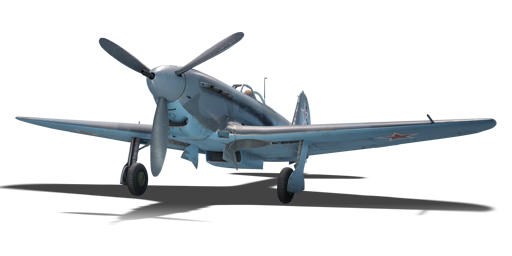



The Yakovlev Yak-9K was a modified subvariant of the Yak-9T, which was the second variant of the Yakovlev-9 fighter aircraft family. The Yak-9K was an attempt to increase firepower over the standard Yak-9T by arming it with a 45 mm NS-45 cannon with 29 rounds and a characteristic muzzle brake to deal with the severe recoil. However, firing the gun at speeds less than 350 km/h still resulted in a significant recoil that led to loss of control of the aircraft and flung the pilot back and forth in the cockpit. Accurate firing was only possible at faster speeds and in bursts of two to three rounds. The cannon's high recoil produced several oil and coolant leaks. Overall, the large gun significantly reduced flight performance, particularly at high altitudes, to the point where Yak-9Ks were only assigned to heavy fighter duties and were required to be escorted by Yak-3s in case of failure. The Yak-9K saw limited use due to the unreliability of the 45 mm cannon and airframe structural instability issues caused by the recoil; it also saw limited production as German bombers gradually decreased in number later in World War II.
The Yak-9K was introduced in Update 1.33. Despite the noticeable increase in firepower as a result of the increased cannon calibre, this also results in massive recoil when firing, making the airframe structurally and aerodynamically unstable. Players can get a taste of this unusual plane's heightened firepower, with a single hit from the cannon enough to cripple any opponents in the sky. During ground realistic warfare mode, it can also take on an anti-tank duty. However, since the ammunition available is incredibly limited (29 rounds), it is critical to make every shot count.
flaps
flaps
flaps
brake
| Belt | Belt filling | Armor penetration (mm) at a distance: | |||||
|---|---|---|---|---|---|---|---|
| 10 m | 100 m | 500 m | 1000 m | 1500 m | 2000 m | ||
| HEFI-T/HEFI-T/APHE | 59 | 57 | 48 | 38 | 31 | 24 | |
| HEFI-T | 8 | 7 | 6 | 5 | 4 | 4 | |
| HVAP-T | 76 | 73 | 59 | 46 | 36 | 28 | |
| APHE | 59 | 57 | 48 | 38 | 31 | 24 | |
| Belt | Belt filling | Armor penetration (mm) at a distance: | |||||
|---|---|---|---|---|---|---|---|
| 10 m | 100 m | 500 m | 1000 m | 1500 m | 2000 m | ||
| T/AP/AP/IAI | 32 | 30 | 22 | 15 | 11 | 7 | |
| AP-I/API-T/IAI/IAI | 29 | 27 | 20 | 13 | 9 | 6 | |
| API-T/AP-I/AP-I/IAI | 29 | 27 | 20 | 13 | 9 | 6 | |
| AP-I(c)/AP-I/AP-I/API-T/IAI | 34 | 32 | 24 | 17 | 12 | 8 | |
| API-T | 29 | 27 | 20 | 13 | 9 | 6 | |
| AP-I/AP-I/IAI | 29 | 27 | 20 | 14 | 9 | 6 | |












Flight performance | |
|---|---|
Survivability |
|---|
Weaponry |
|---|